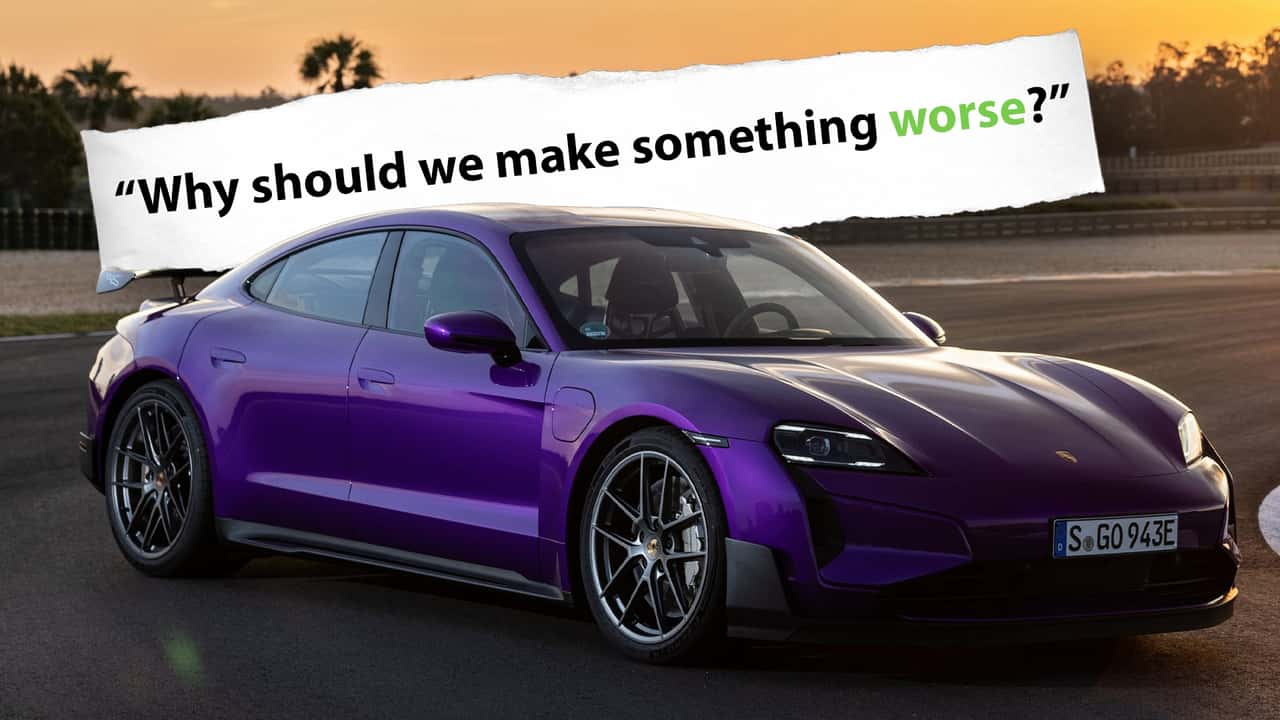- Hyundai may have added fake shifting to its EVs, but Porsche won’t.
- Porsche says the “electric engine is better than” ICE, and simulated shifting makes an EV feel “worse.”
- The automakers feels that there’s no point in simulating a combustion engine when it still produces them.
If you were hoping that your next electric Porsche might have simulated shifting like in the Hyundai Ioniq 5 N, I’ve got some rather unfortunate news for you. Following Hyundai adding fake shifting Porsche apparently looked into adding the tech to its cars but ultimately decided that the feature was a gimmick that made the EV feel “worse” than if it were not to have it at all.

“We drove the Hyundai [Ioniq 5] N and had a look at it, and, obviously, there’s always people who think that’s a good idea,” said Porsche development driver Lars Kern in an interview with Australian media outlet Drive. He later continued: “We came to the conclusion that that is not what we are looking for.”
Hyundai added its N e-Shift feature to the Ioniq 5 N earlier this year. The idea is to simulate the feeling that the driver would get from an eight-speed dual- clutch gearbox, something that the Ioniq 5 doesn’t have given that a single-speed electric drive unit has replaced the traditional combustion powertrain entirely. Sure, it sounds stupid, but like InsideEV’s Mack Hogan explains: it’ll win you over.

2024 Hyundai Ioniq 5 N
In short, it simulates the sounds and feel of a combustion engine—something that many enthusiasts inherently understand—back into driving by using the car’s speakers and regenerative braking.
Now, sure, in an EV, you don’t need to know where the redline is to shift, or what kind of power response to expect when mashing the gas at a particular rev range in a specific gear. But you quickly learn how to corral the EV with the stimulation of those senses, and that can help to better gauge turn-ins and general driving input.
Fun factor aside, Porsche just didn’t seem to agree. “Obviously, we look into what the competition does, but our perspective on this is always why should we make something worse?” Kern said. “I mean, because, in like just how it translates power or how power is applied? The electric engine is better than an ICE, so we figured there’s no reason to simulate what has been in the past.”
He continued, “I don’t see the point of using it to make it feel like a combustion engine because it’s not […] We don’t want to fake the combustion engine because we still produce combustion engines, so we don’t we don’t see the point of doing it.”

2025 Porsche Taycan Turbo S Sport Turismo First Drive
This isn’t the first time that Porsche has refused to jump on a trend. The automaker also recently said that it wouldn’t slap tablet-sized screens on the dashboards of its EVs, something that it feels like many automakers are doing today. But that’s not to say that it won’t do it in the future—just like simulated shifting.
Perhaps when Porsche pumps out its very last combustion motor it may find itself looking for ways to reminisce with the feeling of driving a car powered by gas and a traditional gearbox. But there’s something about the smooth, snappy acceleration of an EV that is, admittedly, longed for on combustion cars.
Maybe Kern is right. Or, maybe, Porsche should let its customers decide.
Porsche Hates Fake Shifting On EVs: ’Why Make Something Worse?’
In the rapidly evolving landscape of electric vehicles (EVs), automakers are constantly trying to find ways to enhance the driving experience and replicate the feel of traditional gas-powered cars. One controversial trend in the industry has been the addition of artificial shifting or simulated gear changes in electric vehicles, often referred to as “fake shifting.” However, not all manufacturers are convinced that this feature is necessary or beneficial.
Porsche, a renowned German automaker known for its high-performance sports cars, has taken a firm stance against fake shifting in EVs. In a recent statement, Porsche CEO Oliver Blume expressed his disdain for the practice, questioning the logic behind adding a feature that ultimately detracts from the driving experience.
“Why make something worse?” Blume said. “We have a clear philosophy of not adding artificial noise or vibrations to electric vehicles. We believe in offering an authentic and genuine driving experience, one that is true to the nature of electric propulsion.”
Porsche’s decision to forego fake shifting in its EVs is in line with the brand’s commitment to innovation and excellence. With its cutting-edge technology and meticulous attention to detail, Porsche has established itself as a leader in the automotive industry, setting the bar high for performance, quality, and craftsmanship.
The debate over the merits of fake shifting in EVs raises important questions about the future of driving and the role of technology in shaping the automotive landscape. While some argue that simulated gear changes can enhance the driving experience and provide a sense of familiarity for drivers accustomed to traditional cars, others believe that such features are unnecessary and detract from the purity of electric propulsion.
As the automotive industry continues to evolve, it is clear that different manufacturers will have varying approaches to incorporating technology into their vehicles. For Porsche, the focus remains on delivering a driving experience that is authentic, engaging, and true to the brand’s rich heritage.
In the end, Porsche’s stance against fake shifting on EVs serves as a reminder that innovation should be driven by a commitment to excellence, rather than a desire to mimic the past. By boldly challenging industry norms and staying true to its principles, Porsche continues to push the boundaries of what is possible in the world of electric vehicles.

